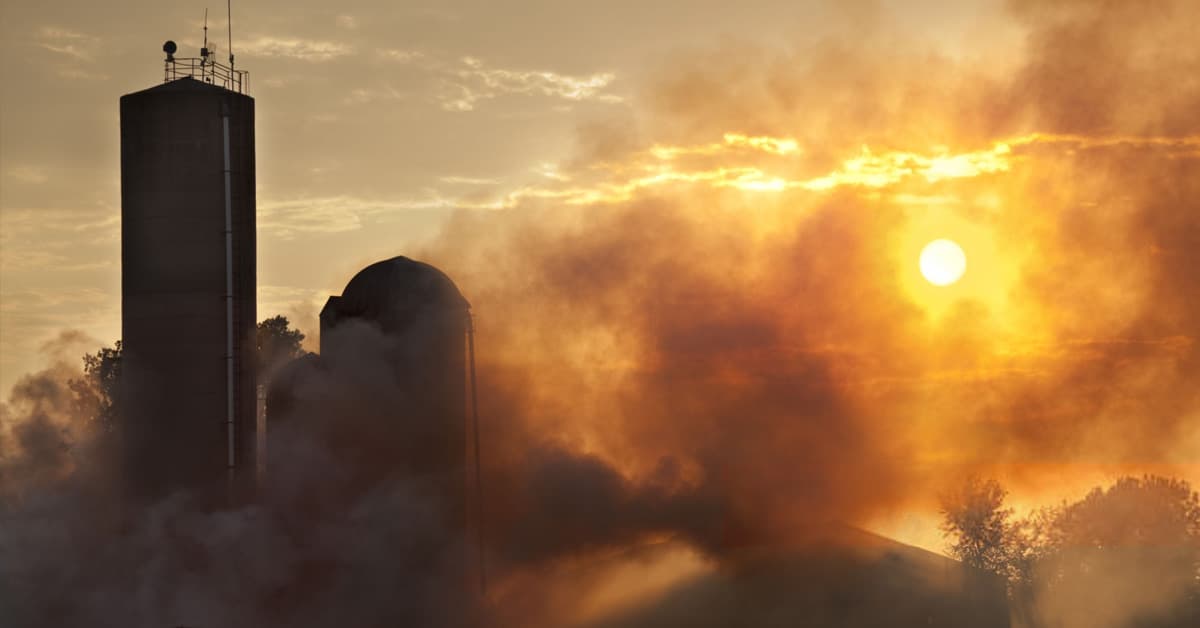A simple fire prevention plan can save your barn from going up in flames. Farm FireSmart recommends ten simple practices you can adopt to reduce the risk of fire without making major changes to structures or equipment.
Barn fires are a year-round concern, but most actually occur in the winter. The colder months are generally the time when feed and bedding storage is greatest, electricity use is high, and equipment repairs and upgrades are made. As winter approaches, it pays to be extra vigilant. Consider the following top ten preventative steps.
1. Focus on housekeeping.
Maintaining a clean and organized barn is a simple and cost-effective way to reduce the likelihood of barn fires.
2. Limit use of temporary electrical equipment.
Extended use of temporary equipment can increase the chance of a fire occurring through degraded outlets and extension cords. Make sure to hard-wire electrical equipment that is used regularly.
3. Regularly inspect and maintain permanent electrical systems.
The humidity and corrosive gases generated by livestock and the storage of manure can degrade permanent electrical systems. The Electrical Safety Code has specific requirements for the installation of electrical equipment within livestock housing areas.
4. Perform hot works safely.
When using such things as welders and blow torches, make sure to do the work in well-ventilated areas or outside of buildings. If the work needs to be done inside farm buildings, ensure the area is well-ventilated, remove all combustible materials, place non-combustible pads under the work area, and have a fire extinguisher readily accessible.
5. Participate in a risk reduction assessment with insurance or fire departments.
Many insurance companies and fire departments offer onsite reviews or risk reduction assessments for farms. Take advantage of these opportunities to help identify potential risks and get recommendations to address concerns.
6. Prepare and implement a fire safety plan.
A fire safety plan can help ensure your farm or acreage is regularly maintaining safety equipment, avoiding or reducing high risk activities and is prepared to respond to a fire. Check your fire extinguishers regularly (preferable monthly) to ensure that they're working properly. Additionally, consider adding smoke detectors with remote signals wherever possible.
7. Regularly inspect and maintain fire walls, fire separations and attic fire stops.
Fire walls, fire separations and attic fire stops can slow the progression of a fire within a building and increase the time for people to escape, and to evacuate livestock safely.
8. Regularly maintain heaters.
Ensure heaters are properly installed, regularly maintained, and suspended well above combustibles or where they cannot be damaged by livestock.
9. Store and maintain motorized equipment away from livestock.
Motorized equipment, such as tractors, produce significant amounts of heat, even after being turned off and stored. This heat can dry any debris caught in the equipment and cause the material to ignite. In addition, motorized equipment can develop electrical/mechanical failures that provide additional sources of ignition.
10. Store combustibles in a designated location away from livestock.
Combustibles such as straw or oil provide the fuel to feed a fire. Isolating these materials in a separate area reduces the risk of a fire spreading throughout the barn.
